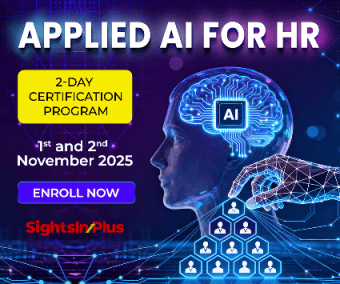In times of ambiguity—when markets shake, business models strain, and talent churn feels like a sneaky leak in the hull—employee feedback is not a “nice-to-have” but a lifeline.
It’s the thermometer, compass and barometer for any organization that wants to stay alive, adaptive, and human. But as many organizations discover, collecting feedback is the easy part; doing something meaningful with it—that’s the hard, often neglected half of the journey.
Why Feedback Matters More Than Ever
In turbulent environments, assumptions break fast. What you think your people feel or need is likely to be stale before the ink dries. Asking your employees—at scale, regularly, and meaningfully—gives you real-time calibration.
According to Harvard Business Review, many firms fall into a trap: they “accumulate feedback but struggle to translate it into meaningful insights and concrete actions.” That gap erodes trust—after all, if “you said you’d act and you didn’t,” the next feedback wave may simply go silent.
From a performance lens, Gallup’s data suggests a direct link: 80% of employees who say they have received meaningful feedback in the past week are fully engaged. Repeatedly hearing your voice matters; feeling that someone is listening and responding—that is what builds culture, loyalty, and discretionary effort.
Beyond sentiment, feedback becomes strategic raw material. The themes and patterns that emerge—around collaboration, process friction, leadership behavior, or career development—can inform everything from your talent strategy to product roadmaps to the very design of organizational structure.
In other words; culture and strategy converge through genuine listening.
Popular Tools (And Their Pitfalls)
Over time, organizations have leaned on a toolkit for collecting employee feedback. Here’s a quick survey:
- Pulse surveys / micro-surveys: Short, frequent check-ins—“How supported do you feel?”—aimed at tracking sentiment over time.
- Annual or biannual engagement surveys: Broad, deeper instruments covering dozens of dimensions (leadership, growth, inclusion, etc.).
- 360° feedback: Multirater inputs (peers, reports, managers) aimed primarily at leadership or high-potential assessment.
- Listening tours / focus groups / “town halls with twist”: Qualitative forums to dig deeper into themes surfaced by quantitative surveys.
- Exit or stay interviews: Rich accounts from people leaving or deciding to stay.
- Text analytics & social data mining: Scraping internal forums, sentiment on intranet, or free-text survey responses to pick up emergent themes.
Each tool has value, but also limitations. Annual surveys can feel stale or detached. Focus groups may get dominated by loud voices. 360 feedback is only useful when psychologically safe and well-facilitated (otherwise it yields defensiveness). The danger is always “analysis paralysis”—too much data, too little decision.
The Heart of The Matter: Making Feedback Actionable
Collecting voice is pointless unless you translate it into clear, measurable, behaviorally grounded action. Here’s a compact recipe:
1. Choose the right questions- Per Perceptyx’s research, good feedback items are Actionable, Behaviorally observable, and Clearly written. Avoid vague, double-barreled statements.
2. Focus sharply (the 1-2-3 rule)- When managers face hundreds of data points, they often freeze or attempt everything—and fail at all. A better rule: pick one focus area, identify two concrete actions, and schedule three follow-ups. That structured simplicity drives execution.
3. Generate hypotheses, test, iterate- Don’t jump to grand reorgs. Use feedback trends to propose hypotheses (e.g. “lack of role clarity is causing frustration”), pilot small changes, see what moves the needle, and then scale.
4. Translate to metrics (and link ROI)- Tie feedback outcomes to business metrics—turnover, productivity, eNPS, or innovation indices. That linkage nudges executives to pay attention and treat people feedback as capital, not fluff.
5. Close the loop transparently- One of the worst sins is the “survey black hole”—employees share, then hear nothing. Publish aggregate themes, what you intend to try, timelines, and checkpoints. Then report back. This builds credibility and a culture of listening.
6. Build action nudges into manager workflows- Execution must become habit. Reminders, micro-learning kits, “suggested next steps” prompts, or even social accountability help translate intent into behavior.
In this chain from voice → insight → experiment → execution → feedback loop, the weakest link is almost always the final link—the follow-through. Good feedback systems are only as strong as their ability to drive real change.
AI, Gen AI, Agentic AI: Game changers in employee engagement & action planning
Here’s where the magic is happening—and where HR professionals must ride the wave, not resist it.
- AI-powered text and sentiment analytics can process thousands of written responses in minutes to surface emerging themes, signal risk zones, and cluster commentary. This turns mountains of qualitative data into tractable insight.
- Agentic AI (i.e. autonomous agents capable of dialog, context-switching, recommendations) can propose action plans tailored to specific teams or managers. For example, a system might interpret feedback from a team and return: “Strengthen cross-role clarity” → “recommend these two actions” → “schedule nudges next month.”
- Emerging systems like tAIfa, a “Team AI Feedback Assistant,” use LLM-driven agents to generate automated feedback to teams based on interaction analysis, improving cohesion and prompting conversation.
- In practice, consulting firms are riding this too: Deloitte speaks of AI-driven employee experience systems that help personalize and scale feedback-to-action mechanisms. McKinsey’s “AI in workplace” research confirms employees are more ready for AI than leaders expect, meaning adoption barriers are more cultural than technical.
- That said, a caution: AI tools must be transparent, respect privacy, promote human agency, and never replace trust. Research on human-centered design emphasizes preserving autonomy, meaning, and control even when AI is present. And in concerned voices, scholars studying “Employee Well-being in the Age of AI” highlight that AI systems, if opaque or mis-managed, can raise fears around bias, fairness, or job security.
Used well, these technologies collapse the time between feedback and action, democratize insight access, support routine follow-up, and scale consistency—so no manager gets off the hook.
What Organizations Can Do — And How To Get Started
- Start small, not all at once. Pilot AI-assisted feedback modules in one function or geography. Learn what works, iterate fast.
- Invest in manager capability. No system can succeed without strong managers who are coached to interpret feedback, drive small experiments, and sustain accountability.
- Embed feedback into daily flow. Feedback shouldn’t be a quarterly side-project; it must integrate into weekly rituals, check-ins, project reviews.
- Govern data, ethically and transparently. Be clear about how feedback data is used, anonymized, surfaced, and acted on.
- Celebrate wins loudly. Even small improvements (e.g. improved meeting rhythm, better clarity) should be shared, so the organization sees feedback → change in action.
- Build your AI capability roadmap. Start with analytics and nudging systems. Over time, layer in agentic assistants for planning, micro-surveys, and conversational listening bots.
Remember: feedback without follow-through is like planting a seed and never watering it—wasteful and disappointing.
Final Word: Feedback As Strategic Rocket Fuel
In ambiguous times, your people don’t just want direction—they want evidence that you’re listening and that the conversation leads somewhere. Feedback, when turned into action, becomes a strategic differentiator: it informs your culture, shapes your priorities, and primes your organization for adaptive advantage.
Yes, it takes discipline and humility. Yes, the technology is evolving. But the first step is cultural: committing to treat employee voice not as data to archive, but as capital to invest. Because when people see that their feedback actually moves things—even if incrementally—they become co-owners of change rather than passive respondents.
Let’s turn those surveys, check-ins and open forums into momentum. Let’s build organizations where feedback is living, breathing, evolving—and the full weight of it drives tomorrow’s strategy. The future belongs to those who don’t just hear the voice of work—they act on it.
Note: We are also on WhatsApp, LinkedIn, and YouTube to get the latest news updates. Subscribe to our Channels. WhatsApp– Click Here, YouTube – Click Here, and LinkedIn– Click Here.



